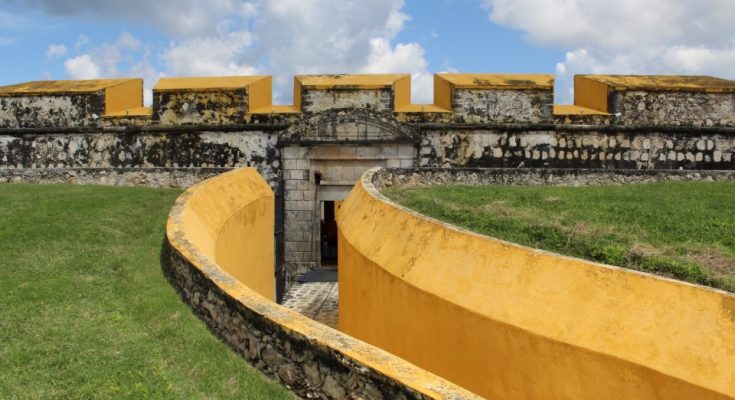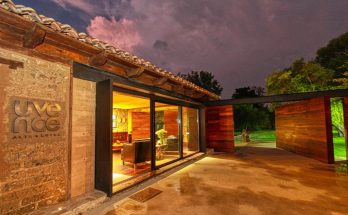Campeche is the capital of the State of Campeche. It is located 196 km southeast of Merida in the by the federal highway 180, and 471 km northeast of Villahermosa by the federal highways 186, 261 and 180 in Mexico.
The name of Campeche comes from the Mayan world ‘Ah-Kim-Pech’, which means ‘The sir sun jigger‘, but since its pronunciation was difficult for the Spanish, they called it ‘Kna Pech’, which means ‘Place of snakes and jiggers’.
Table of Contents
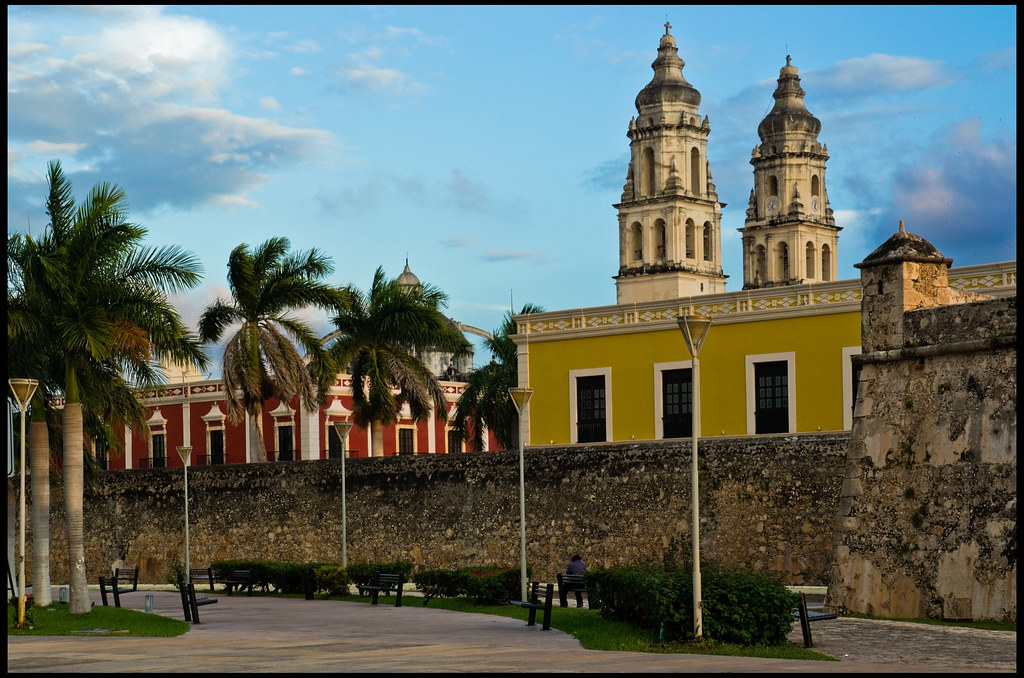
City of Campeche
Campeche, founded around the third century of our era, was the principal town of the Mayan province. By 1517, expeditionary lead by Francisco Hernandez de Cordova reached the village of Ah-Kim-Pech to replenish their water supply, after a 4 days storm they were able to disembark at Champoton where they were attached by the Mayan troops led by Moch Couoh.
The Mayan victory over the Spaniards became a fact, and ever since the place where the battle took place its called the ‘bay of the bad fight’. Later, in 1531, Commander Francisco de Montejo founded Salamanca de Campeche, but failed to enter in the land of Mayas. In 1540, Montejo’s son arrived to Champoton and conquered Kim Pech and Acanul. In 1541 Francisco Montejo founded the ‘Villa de San Francisco de Campeche‘, and won later Tenabo, Hecelchakan and Calkini.
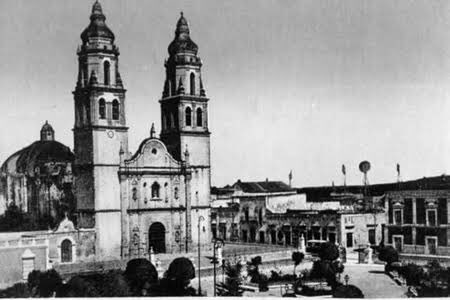
For the ones who would like to been born in the times when pirates conquered places and struggled many fights, its definitely a good idea to visit the city of Campeche. Because the constant tension of wars, conflicts, alliances between England, France and Holland with Spain and Portugal the people from Campeche were forced to fortify their city by building forts and walls from 1685 to 1704, thus preventing them from taking advantage of their economic development.
Submerged evidences in Campeche: One of the projects of investigation on Subaqueous Archaeology, that at the moment is carried out in Sonda de Campeche is the tie ones with the rest of the Fleet of the New Spain of 1630, 1631; this it has allowed to obtain data about numerous sites and recovered Submerged evidences in Campeche City, Campeche, Mexico – Tour By Mexico ® some objects like tubes, anchors, bottles, containers, slab, textiles, needles and pins.
Through analysis of these materials it is possible to know, in the case of a shipwreck, its origin or destiny, nationality and antiquity, all of them important data for the reconstruction of processes of the past.
Campeche’s history has divided the city in three zones:
- The Center formed by the old walled city which was inhabited by the Spaniards during the Colony
- San Francisco located to the north of the wall, where the Mayan population was concentrated; and
- San Roman to the south where the Mexican natives established themselves with the mulattos brought from the Islands of the Caribbean, mainly from Cuba.
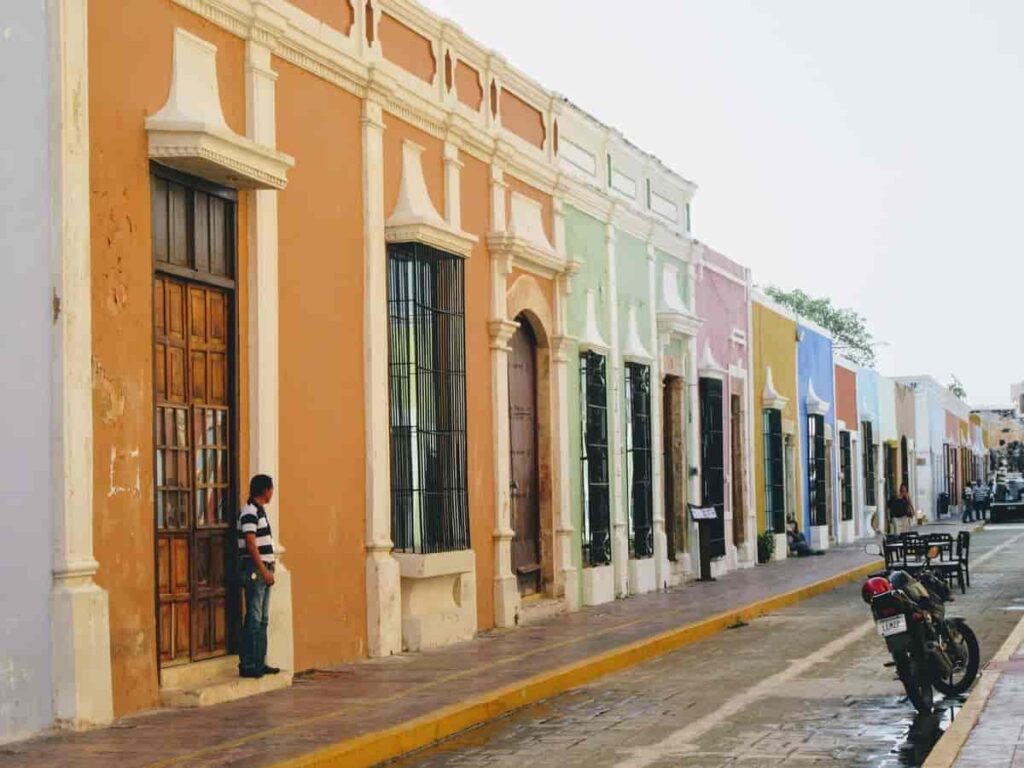
Campeche Attractions
Nowadays the bastions and remains of the wall are historical monuments, museums, gardens and other cultural attractions such as:
Ancient House of the Carvajal family
The Ancient House of the Carvajal family with Arabic arcs and flight of steps made or marble. Currently its been converted into a crafts store and government offices.
Baluarte of Nuestra Señora de la Soledad
The Baluarte of Nuestra Señora de la Soledad Built in 1690, here you can visit the Steal museum named Dr Roman Pina Chan, with an exhibition of 22 Mayan Sculptures.
Cathedral of Campeche
The Cathedral of Campeche (The Church of our lady of Purisima Concepcion) The first chapel is dated on the XVI century, and it was located on the nearest summit of the main plaza of Campeche. The actual church after our Lady of Purisima Concepcion, was built in the XVII century. The construction was interrupted several times, but it was able to be finished thanks to the donations of Mrs.
Margarita Guerra, and it was blessed on July 4th, 1705. In 1758 the west wind tower was built, and extra construction was done, being finished 4 years later. The monument was consecrated on July 25th, 1833 by the bishop of Yucatan, Jose Maria Guerra, in 1895, the pope Leon XIII founded the bishopric of Campeche and the temple was changed into the Campeche, now the Diocese of Campeche.
The Main Square
The Main Square where some examples of Colonial architecture can be observed.
The Church of San Francisco
The Church of San Francisco built in the XVI century.
San Francisco de Paulo Toro Park
The San Francisco de Paulo Toro Park where an exhibition of handicrafts from the country is presented in December.
Regional Museum
The Regional Museum which is known as the Casa del Teniente del Rey (House of the Lieutenant of the King) with a collection of European weapons from the XII to XIX centuries.
Historical Hall of the Fortifications
The Historical Hall of the Fortifications which is based on historical explanations, reconstructions of fortifications of the old walled city with photo mountings in color and scale models.
Puerta del Mar
Puerta del Mar (Sea Gate) located downtown, its one of the four gates of the City, it was used to receive and dismiss travelers and their products.
Puerta de Tierra
Puerta de Tierra (Land Gate) built in 1732. Its considered as the main symbol of the Campeche City. Don’t miss the light and sound show on Tuesday, Friday and Saturday at 8 PM.
San Jose el Alto
San Jose el Alto At the end of the 18th century various outer works were constructed which increased the range of action from the plaza of Campeche: one of them is this structure, which was completed August 9, 1972 by lieutenant to the king, don Jorge Sabio de Vargas, The Reduct of San Jose can be considered as a perfectly conserved project since it contains a ditch barrel vault, cistern and gates which served to guard the outside; the ditch was covered was covered with stakes and quicklime.
One can also see the hall which served as a vestibule, guardroom, sleeping quarters, chapel, kitchen, warehouse for gunpowder, a cell, merlones an embankment. loopholes and a latrine. The cistern is a water deposit which filled from collectors which found on the highest parts of the structure facing the interior of the central patio.
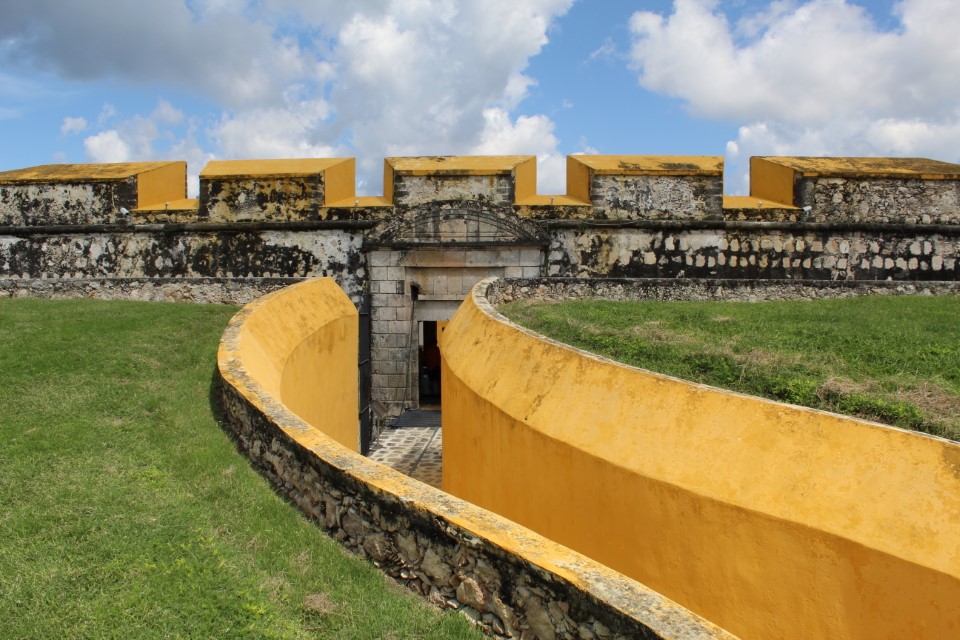
Cane of Rudder
This nautical element served to turn the rudder that governed the boat. Wood carving finely of African black ebony is an admirable example of Florentine art (Italy) of century XVI. In it can see a galgo can, next the piston rod adorned with leaves of acanto with the symbol of navigation that are the dolphin and the trident of Neptune (in form of harpoon with three teeth); as well as the caduceus of Mercury (rod with two wings in the end surrounded by two snakes), emblem of La Paz, the concord, the commerce and of the medicine. It belonged to a sailboat that comes from Europe to take diverse raw materials as the dye wood.
The boats arrived empty and to use the voluminous volume, brought generally as it ballast or counterbalance roofing tile of Marseilles, France and marble of Carrara, Italy. Both materials were re taken advantage of in the construction of the houses. The cane of Rudder was found in the Old River or Dry River, which is affluent of the river Pelizada, Campeche, by the end of century XIX. Originally the piece belonged to Don Jose Jesus Cervera y Arma
The bastion’s terrace
The esplanades of the fortresses had several well-defined architectural elements. The slopes of the access ramps had to allow cannons and small carts transporting ammunition to be rolled up to the top.
The ramp of the Bastion of La Soledad is sustained by three arches; on the terrace we can see two types of parapets: the one facing the sea is low and continuous so cannons could be moved freely to attack enemy ship approaching the city; the lateral ones, on the other hand, had benches so that shooters could be slightly elevated to shoot from the gun emplacements.
The merlons are the solid portions of the parapet that made it possible to take shelter between to emplacements, while the weapons were reloaded. Towers were placed at the corners. Their walls bore embrasures -vertical openings- that afforded greater security to the defenders. Sometimes toilets or latrines were placed in these towers.

A GUIDE TO VISIT CAMPECHE AND SURROUDINGS IN 4 DAYS
Day 1
Take a trip downtown in the Tourism Tram. Check our the handicrafts. Visit the Casa 6 on the Main Plaza, the Cathedral and the San Francisco area. In the afternoon take the other Tram to the Forts of San Miguel and San Jose.
Day 2
Take a tour to Edzna or Calakmul. By the night take a stroll on the seaside promenade, watch people and check out a place to have dinner.
Day 3
Rent a car and drive to Champoton, on your way you will see beautiful beaches and many seafood restaurants. By the night don’t miss the light and sound show at ‘La Puerta de Tierra’.
Day 4
Visit the botanical garden ‘Baluartes de Santiago’. Also visit the ‘Baluarte’ of San Pedro, San Juan, San Francisco, Santa Rosa and San Carlos (City Museum). By the night go dancing at one of the discos in town.
More information
The handicrafts are made of:
- tortoiseshell
- palm of jipi
- wood
- shells
- clay and
- porcelains ceramic
- embroidered clothes
- gold and silver jewelry
Campeche is famous because of its excellent gastronomy such as the bread of dogfish, and the Nac-cum made with red snapper. Actually the City of Campeche offer’s visitors numerous things to do and has something adequate for everyone. Campeche its ideal as a base to visit its surroundings as archaeological sites and beaches.
Conclusion
The city of Campeche is a place you have to visit during your visit to Mexico and of course, you will find here the best hotels where you can spend your short or long vacation, but without a doubt: You will have fun, learn and be surprised by Campeche.

